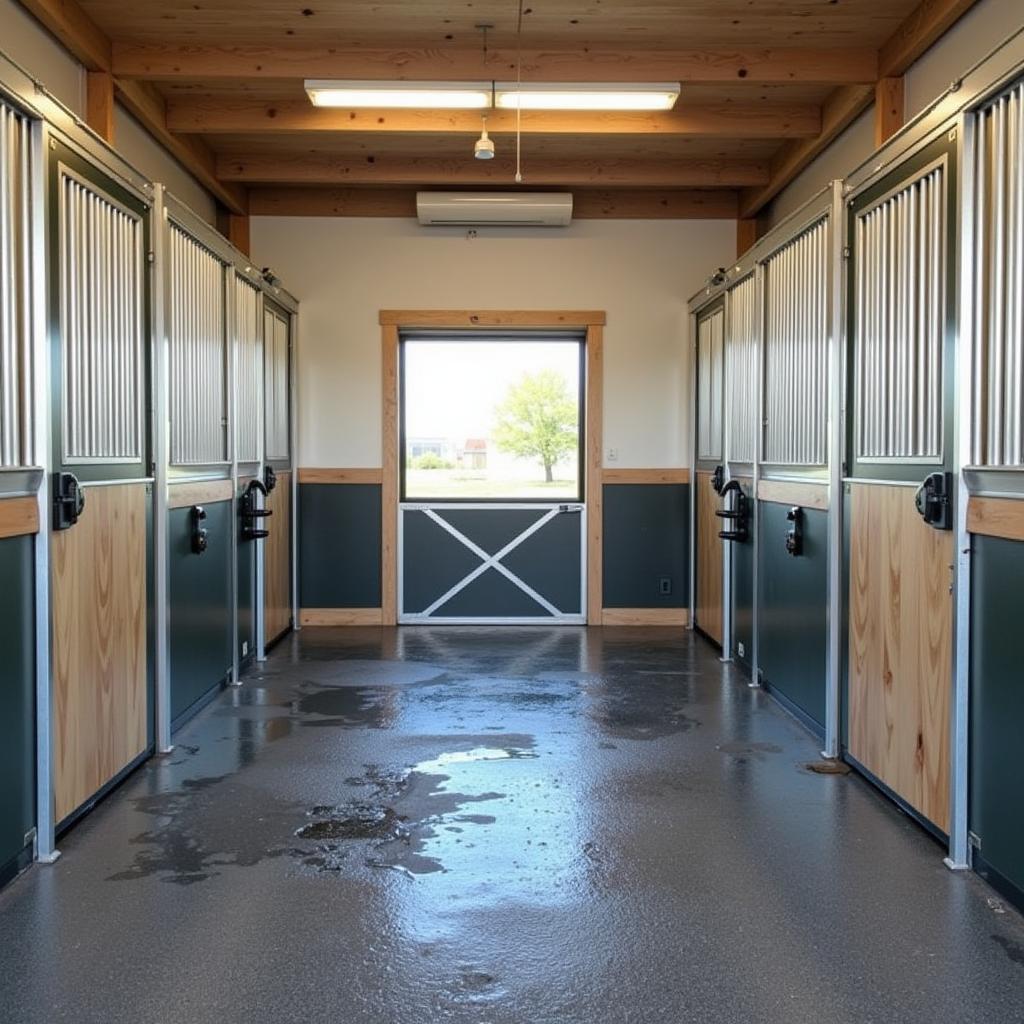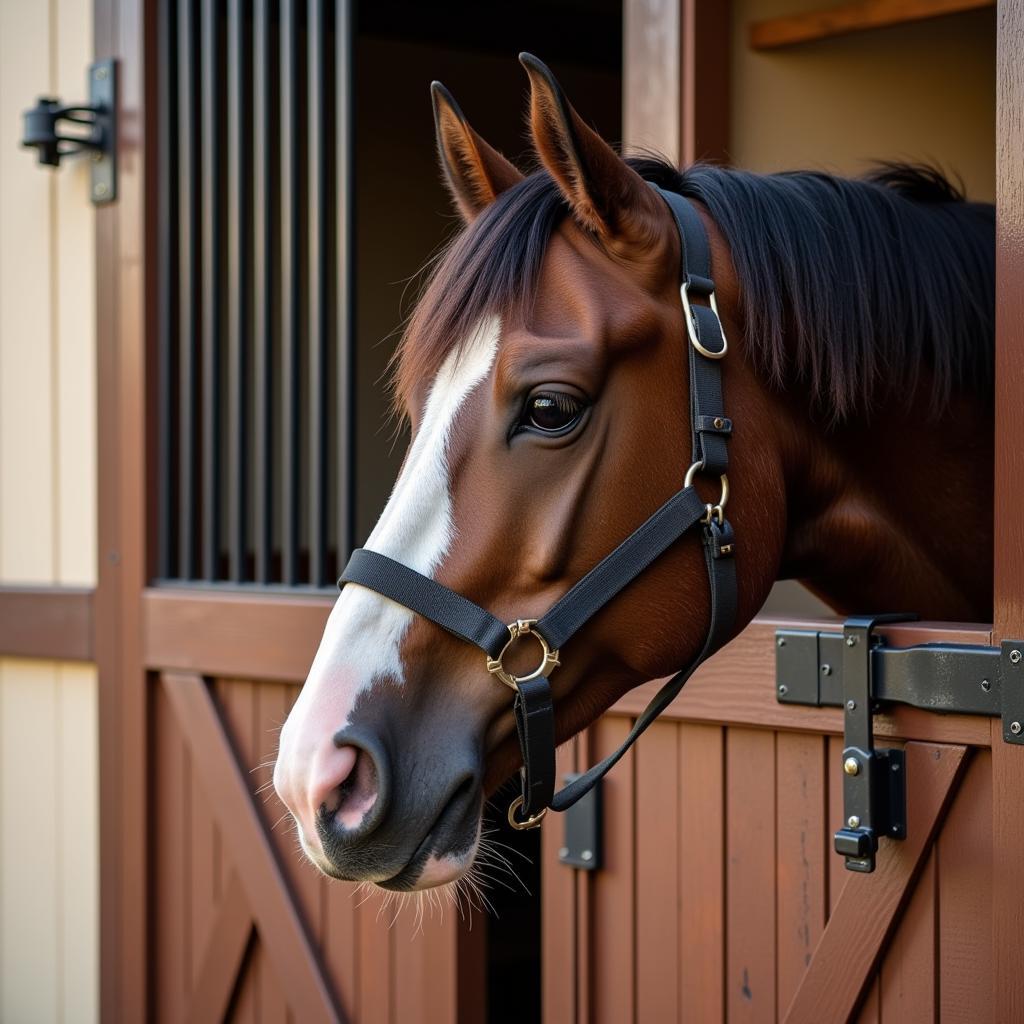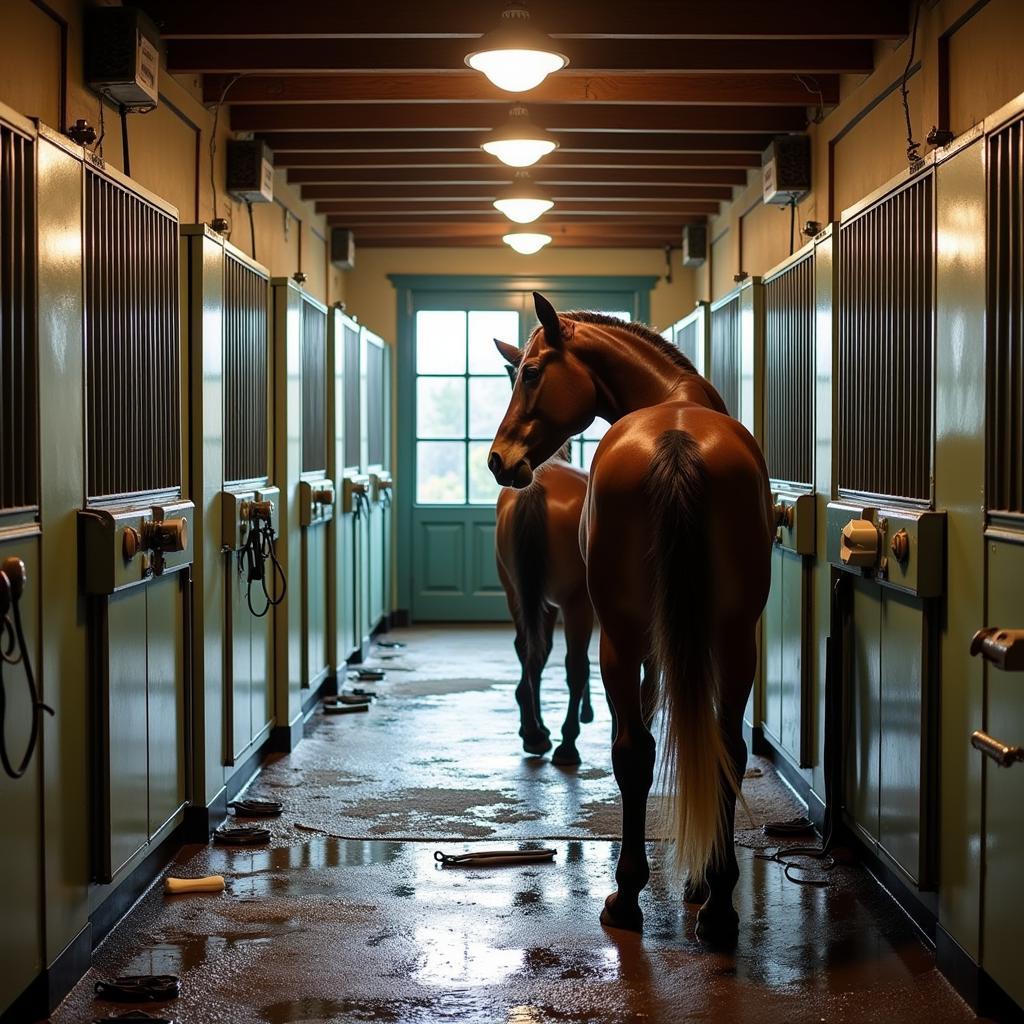A clean and comfortable Horse Washing Stall is a must-have for any horse owner. It not only makes grooming easier and more efficient but also contributes to the overall health and well-being of your equine companion. This comprehensive guide will delve deep into the world of horse washing stalls, covering everything from design considerations to the numerous benefits they offer.
Why Invest in a Horse Washing Stall?
Washing your horse outside, especially during colder months, can be a messy and uncomfortable experience for both you and your horse. A dedicated horse washing stall provides a controlled environment, ensuring a safe and efficient grooming session.
Key Considerations for the Perfect Horse Washing Stall
1. Location is Everything
Choosing the right spot for your horse washing stall is crucial. Ideally, it should be:
- Easily Accessible: Ensure clear pathways for leading your horse in and out.
- Well-Lit: Proper lighting is essential for visibility during washing and inspection.
- Well-Drained: Proper drainage is crucial to prevent waterlogging and maintain hygiene.
 Well-Lit Horse Washing Stall
Well-Lit Horse Washing Stall
2. Size Matters: Choosing the Right Dimensions
The size of your horse washing stall should be comfortable for your horse to stand in and allow you enough space to move around.
- Minimum Dimensions: Aim for a minimum of 6 feet wide by 10 feet long for a standard-sized horse.
- Larger Breeds: Consider a larger stall, up to 8 feet wide by 12 feet long, for larger breeds like draft horses.
3. Flooring: Safety and Comfort
The flooring material is paramount for safety and comfort.
- Non-Slip Surface: Rubber mats or textured concrete provide excellent grip, minimizing the risk of slips and falls.
- Drainage: Ensure the floor slopes slightly towards a drain to prevent water from pooling.
4. Walls and Doors: Durability and Security
- Durable Materials: Opt for sturdy materials like concrete, metal, or pressure-treated lumber that can withstand moisture and regular cleaning.
- Secure Latch: A secure latch on the door is crucial to prevent your horse from escaping during washing.
 Horse Washing Stall Door with Secure Latch
Horse Washing Stall Door with Secure Latch
5. Water Supply: Hot and Cold Access
Having both hot and cold water access is essential for year-round use and for different washing needs.
- Temperature Control: Installing a mixing valve allows you to adjust the water temperature to a comfortable level for your horse.
- Hose and Spray Nozzle: Choose a durable hose and a spray nozzle with adjustable settings for rinsing and bathing.
6. Lighting and Ventilation
- Adequate Lighting: Natural or artificial light is essential for proper visibility.
- Good Ventilation: Proper ventilation helps dissipate moisture and prevent the buildup of mold and mildew.
The Benefits of Using a Horse Washing Stall
- Efficient Grooming: A dedicated space streamlines the grooming process, saving you time and effort.
- Improved Hygiene: A clean washing stall promotes better hygiene, reducing the risk of skin infections and other health problems.
- Enhanced Safety: The controlled environment minimizes distractions and potential hazards for both you and your horse.
- Year-Round Use: A well-designed stall with hot and cold water access allows for comfortable washing in any weather.
- Increased Property Value: A dedicated horse washing stall is a valuable addition to any equestrian property, potentially increasing its resale value.
 Grooming a Horse in a Well-Equipped Stall
Grooming a Horse in a Well-Equipped Stall
Expert Insights on Horse Washing Stalls
“A well-designed horse washing stall is an investment in your horse’s health and your own peace of mind,” says renowned equine veterinarian Dr. Sarah Jones. “It makes grooming less stressful for everyone involved and provides a safe and comfortable environment for your horse.”
Conclusion
Investing in a horse washing stall is a smart decision for any horse owner committed to providing the best possible care for their equine companions. By considering the factors outlined in this guide, you can create a safe, efficient, and comfortable washing experience for both you and your horse.
FAQs About Horse Washing Stalls
- Can I build a horse washing stall myself? Yes, with some basic construction skills and the right materials, you can build your own horse washing stall.
- What is the best material for a horse washing stall floor? Rubber mats or textured concrete are excellent choices for their non-slip properties and drainage capabilities.
- How often should I clean my horse washing stall? Regular cleaning, ideally after each use, is important to maintain hygiene and prevent the spread of bacteria.
- Can I use a regular garden hose for washing my horse? While a garden hose can work, investing in a dedicated hose with adjustable spray settings is recommended for a more controlled and effective washing experience.
- What is the ideal temperature for washing my horse? The water temperature should be lukewarm, neither too hot nor too cold, to avoid discomfort or shocking your horse.
Need help finding the perfect horse tail ribbons for your next show? Check out our wide selection of horse tail ribbons.
Do you have other questions or need further assistance? Contact us at Phone Number: 0772127271, Email: [email protected]. Or visit our address: QGM2+WX2, Vị Trung, Vị Thuỷ, Hậu Giang, Vietnam. We have a 24/7 customer service team.